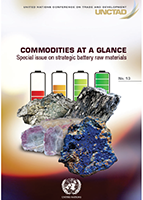
Anthropogenic greenhouse gas (GHG) emissions since the industrial revolution have driven large increases in the atmospheric concentrations of carbon dioxide (CO²), methane (CH4) and nitrous oxide (N2O).
According to scientists, these gases along with other sources of GHG emissions, are extremely likely to have been the dominant cause of the observed warming of the climate system since the mid-19th century.
Some estimates show that failure to stabilize or reduce global emissions of CO² and other greenhouse gases will lead to economic losses amounting to at least US$2 billion per day by 2030.2 Moreover extreme weather events and patterns associated with the warming climate system are likely to impact the achievement of the Sustainable Development Goals, particularly Goal 13 –“Take urgent action to combat climate change and its impacts.”
Fossil fuel use is the primary source of anthropogenic GHG emissions. A transition to decarbonization of energy consumption is already underway with the introduction of renewable energy systems such as photovoltaic and wind turbine systems and more recently rechargeable energy storage batteries that are used to produce energy for household use and to power electric vehicles.
The market for rechargeable batteries, particularly for lithium-ion batteries (LIBs), is growing rapidly owing to its cost and efficiency advantages over other rechargeable battery types. It has been largely driven by environmental concerns, a growing market for electric vehicles and support from governments.
The aim of this report is to provide information on the critical raw materials used in LIBs with respect to production, consumption, trade and prices. The report also analyses the influence of supply and demand of these battery raw materials on market prices in view of the growing role of LIBs in energy storage and electric vehicles. Furthermore, the study examines the varying stages of transformation from ores/brines into value added products and their implications for producing countries.
The scope of the report will be limited to a few battery raw materials that are considered as strategic and critical: Cobalt (Co), lithium (Li), manganese (Mn) and natural graphite (C), given that these materials are essential to the production of rechargeable batteries, which are expected to have a high market growth and will play an important role in mitigating GHG emissions from the use of fossil fuels.
The report is divided into six chapters. The first chapter discusses the different types of rechargeable batteries, their performance and chemistries. The second chapter presents an overview of the selected battery raw materials considered in this report. The third chapter discusses the upstream and downstream value chains of the LIB. The fourth chapter discusses supply, demand with respect to production and consumption, and price evolution of the selected raw materials used in LIBs. The fifth chapter discusses the social and environment effects related to exploitation of the selected battery raw materials discussed in this report. The final chapter draws some policy implications from the report.


